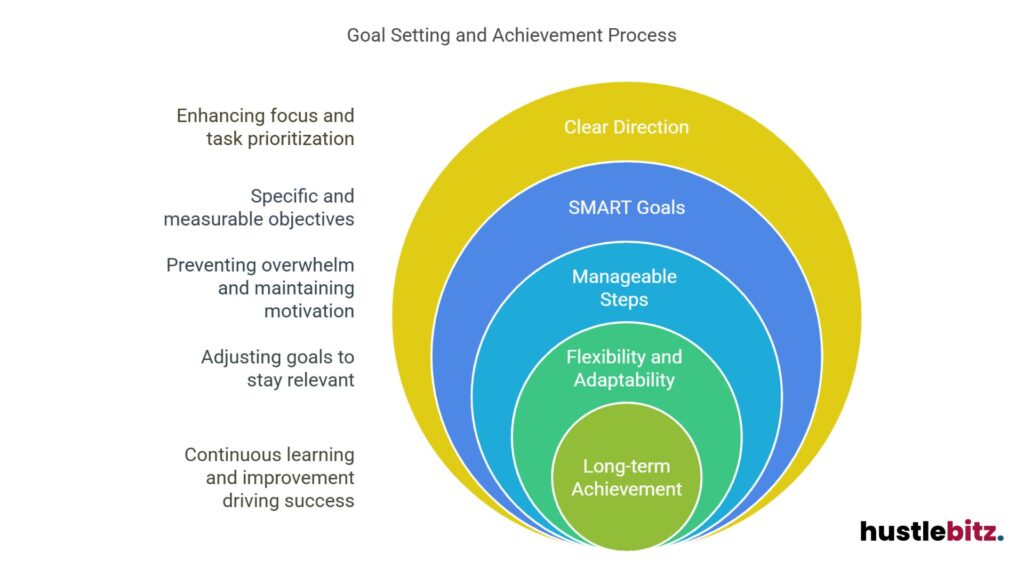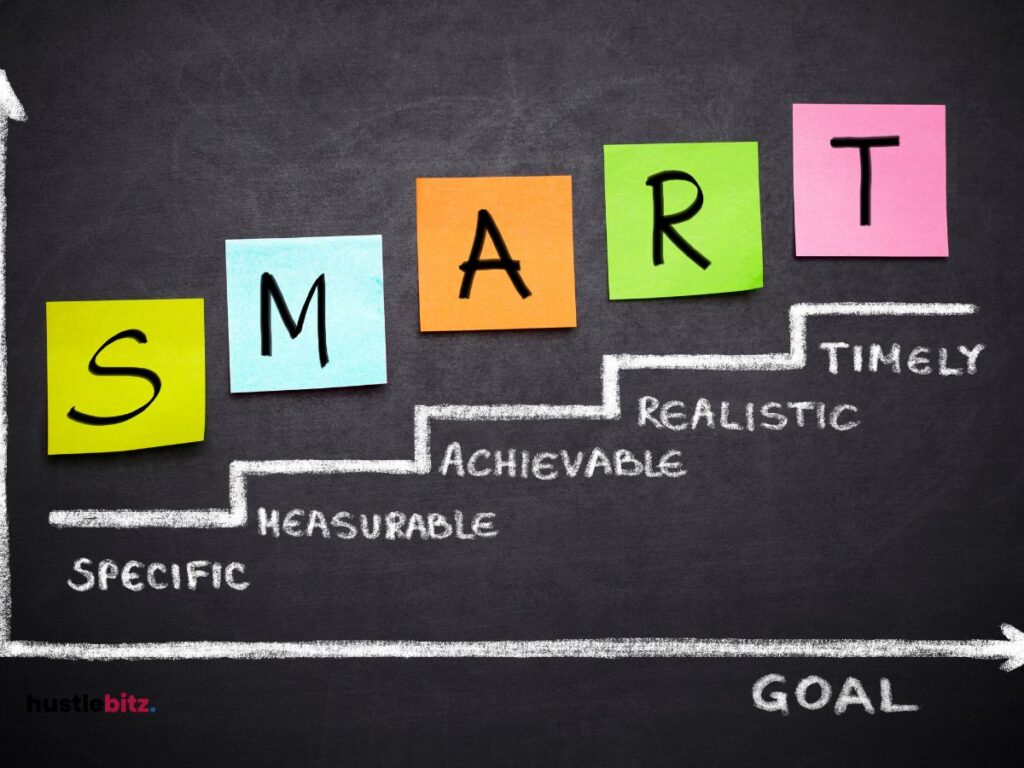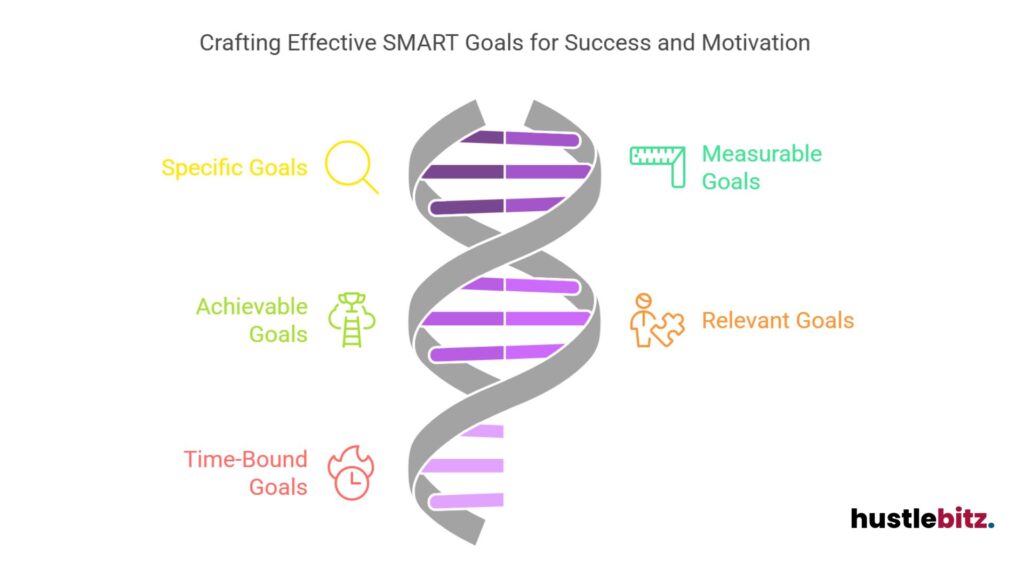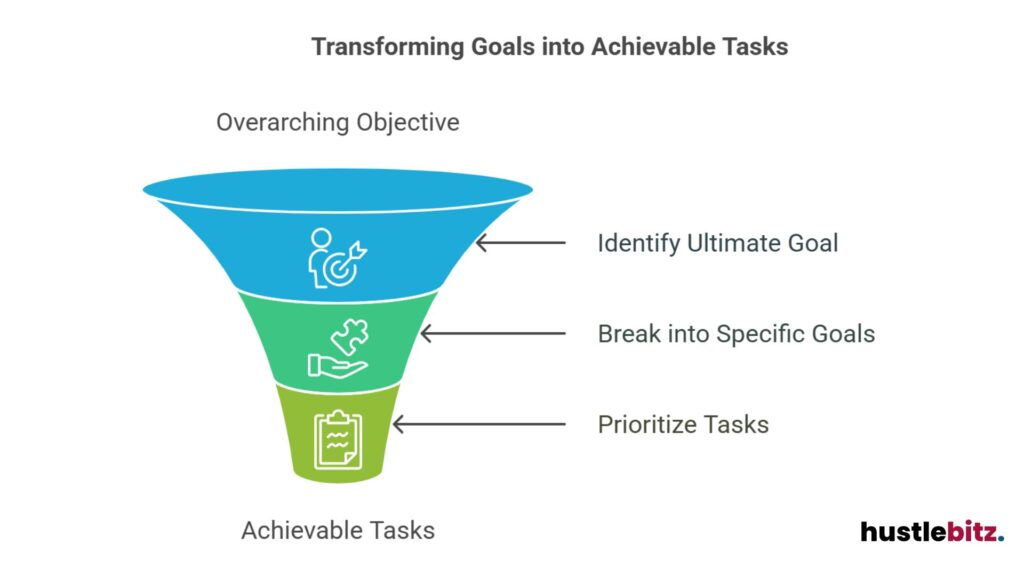Goal setting is essential for enhancing productivity and achievement, as it offers clear direction and establishes measurable objectives. By breaking down larger goals into manageable steps, individuals maintain focus and motivation while tracking progress. Employing the SMART framework—Specific, Measurable, Achievable, Relevant, and Time-bound—ensures that goals align with personal and organizational values, fostering ownership and accountability. Adjusting goals as circumstances change promotes resilience and adaptability, allowing for sustained engagement toward longer-term aspirations. This iterative process not only drives productivity but also supports continuous improvement and personal growth. There are further strategies to explore that can amplify your goal-setting effectiveness.
Key Takeaways
- Goal setting provides clear direction, enhancing focus and prioritization of tasks to boost overall productivity.
- SMART goals framework ensures objectives are specific, measurable, achievable, relevant, and time-bound, facilitating effective tracking and assessment.
- Breaking goals into manageable steps prevents overwhelm and maintains motivation through steady progress towards larger objectives.
- Adjusting goals as needed allows for flexibility, ensuring relevance and alignment with changing circumstances and aspirations.
- Iterative goal processes foster resilience and adaptability, supporting continuous learning and improvement, which drives long-term achievement.

Importance of Goal Setting
Goal setting is vital for enhancing productivity, as it provides a clear direction and measurable objectives that guide individuals and teams toward achieving their desired outcomes. The importance of goal setting cannot be overstated, particularly in the workplace, where a structured approach can lead to significant improvements in performance and engagement. By establishing clear goals, employees can focus their efforts on specific tasks, reducing ambiguity and enhancing motivation.
The benefits of goal setting extend beyond mere productivity; they foster a sense of ownership and accountability. When individuals set achievable goals, they are more likely to commit to their tasks and take initiative in problem-solving. This not only boosts individual morale but also contributes to a collaborative team environment, where collective goals drive shared success.
Moreover, clear goals serve as benchmarks for progress. They allow for regular assessment of performance, enabling adjustments to strategies as needed. This iterative process helps maintain momentum and encourages continuous improvement, ensuring that both short-term and long-term objectives are met effectively.
Types of Goals

Different types of goals can be categorized based on their timeframe, scope, and purpose, each playing a crucial role in driving productivity and engagement in both personal and professional settings. Understanding these types of goals is essential for effective goal setting, as it allows individuals and organizations to tailor their strategies for optimal goal achievement.
Timeframe is a primary way to classify goals into short-term, medium-term, and long-term categories. Short-term goals are typically achievable within days or weeks, providing immediate motivation and feedback. Medium-term goals, spanning months, bridge the gap to long-term aspirations, while long-term goals, which can take years to accomplish, provide overarching direction.
The scope of goals can be classified into personal, professional, and academic types. Personal goals often focus on self-improvement and wellbeing, professional goals align with career advancement, and academic goals center on educational achievements. By identifying the scope, individuals can prioritize their efforts effectively.
Lastly, goals can also be categorized by purpose, which includes outcome goals, performance goals, and process goals. Outcome goals are end results, performance goals focus on demonstrating a certain level of skill, and process goals emphasize the steps taken to achieve results. Each type serves a unique function, enabling individuals to harness the benefits of setting goals effectively.
SMART Goals Framework

A structured approach to goal setting, such as the SMART Goals Framework, can significantly enhance the effectiveness of the various types of goals previously discussed. The SMART acronym stands for Specific, Measurable, Achievable, Relevant, and Time-bound, which serves as a guideline for effective goal setting. By applying this framework, individuals and organizations can create clear and actionable goals that facilitate focused efforts towards achievement.
- Specific goals clearly define what is to be accomplished, eliminating ambiguity.
- Measurable goals allow for tracking progress and determining when the goal has been met, fostering a sense of accomplishment.
- Achievable goals ensure that aspirations are realistic and attainable, which is crucial for maintaining motivation.
- Relevant goals align with broader objectives, ensuring that efforts contribute meaningfully to overall success.
- Finally, time-bound goals establish a deadline, creating urgency and prompting timely action.

Implementing SMART goals can significantly increase employee productivity by providing a structured pathway for individuals and teams to achieve their goals.
When employees understand exactly what is expected and have measurable targets to aim for, they are more likely to remain focused and engaged in their tasks.
Moreover, the clarity afforded by the SMART framework can reduce frustration and enhance collaboration, as team members can synchronize their efforts towards common objectives.
Aligning Goals With Values

Aligning goals with personal and organizational values is essential for fostering a sense of purpose and commitment in the pursuit of productivity. When individuals and teams set goals that resonate with their core values, the likelihood of achieving those goals increases significantly. This alignment enhances the value of goal setting by creating a strong emotional connection to the objectives being pursued.
For organizations, this alignment plays a crucial role in driving organizational success. When employees understand how their personal values align with the larger mission of the organization, they are more motivated to contribute meaningfully. Goals help employees see the bigger picture, allowing them to take ownership of their work and fostering a culture of accountability. This sense of ownership directly correlates with goal commitment, as employees are more likely to invest their time and energy into goals that reflect their values.
Moreover, when goal setting is aligned with values, it promotes a work environment characterized by trust and collaboration. Employees who feel that their personal beliefs are respected are more inclined to engage with their colleagues and work towards common objectives. This synergy not only boosts individual performance but also enhances team dynamics, further propelling productivity.
Ultimately, aligning goals with values not only facilitates personal fulfillment but also cultivates a resilient organization capable of thriving in a competitive landscape. For both individuals and organizations, the journey toward achieving meaningful goals becomes a shared endeavor anchored in a common purpose.
Breaking Goals Into Steps
Breaking goals into manageable steps transforms overwhelming objectives into achievable tasks, fostering a clear pathway toward success. This process is crucial in effective goal setting, as it enables individuals to establish goals that are not only specific but also measurable. By dissecting broader goals into smaller, actionable components, individuals can maintain focus and motivation, ensuring steady progress.
To begin, it is essential to identify the ultimate objective—what you wish to achieve. Once the overarching goal is clear, the next step involves breaking it down into smaller, specific goals. For instance, if the primary goal is to enhance professional skills, one might establish specific goals such as completing an online course, attending workshops, or seeking mentorship. Each of these goals should be measurable, allowing individuals to track their progress and celebrate milestones along the way.

Furthermore, when breaking goals into steps, it is helpful to prioritize tasks based on urgency and importance. This prioritization not only clarifies the sequence of actions needed but also prevents feelings of overwhelm, as it outlines the most immediate tasks that contribute to the larger goal.
Adjusting Goals as Needed

Adjusting goals as necessary ensures that individuals remain flexible and responsive to changes in circumstances, enhancing their ability to achieve desired outcomes.
Goal setting involves the process of defining objectives that guide personal and professional development. However, the dynamic nature of life and work environments often necessitates that these goals are not static; instead, they should evolve as circumstances change.
Setting clear, realistic goals is foundational to effective goal setting. Achievable goals serve as benchmarks for progress and motivation. Yet, when unexpected challenges arise or new opportunities present themselves, it becomes essential to assess and adjust goals accordingly. This flexibility allows individuals to realign their focus, ensuring that their objectives remain relevant and attainable.
Adjusting goals as needed does not signal failure; rather, it reflects a proactive approach to personal growth. By regularly evaluating goal progress, individuals can identify areas requiring modification, whether that involves scaling goals down for manageability or raising them to remain challenging. This iterative process fosters resilience and adaptability, qualities that are crucial in today’s fast-paced world.
Ultimately, the ability to adjust goals not only enhances productivity but also reinforces a commitment to lifelong learning and improvement. Embracing this practice allows individuals to navigate obstacles more effectively and maintain motivation towards achieving their aspirations.
Final Thoughts
Goal setting is a powerful tool that drives productivity and achievement by providing clarity, direction, and motivation. By utilizing frameworks like SMART goals, aligning objectives with personal and organizational values, and breaking down larger goals into manageable steps, individuals and teams can navigate the path to success with confidence. Flexibility in adjusting goals as circumstances change further enhances resilience and adaptability, ensuring continuous progress toward meaningful outcomes. Ultimately, a thoughtful approach to goal setting fosters not only productivity but also personal and professional growth, leading to sustained achievement over time.




